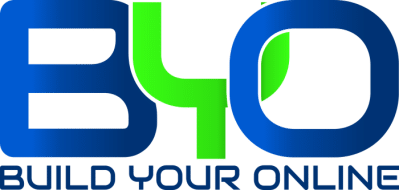We’ve seen that “deer in the headlights” look from clients too many times during meetings. They think they need to be savvy and know all the on-line lingo to have a discussion about their website, when in reality, that’s why they are hiring us in the first place. Please remember that you are the expert in your field, and you don’t expect everyone to know all the jargon or acronyms that you encounter every day. It’s the same in web design and online marketing. You’ve turned to a professional web designer or digital marketing firm, like Build Your Online, because we know our business inside and out. But, it is helpful for both parties to speak the same language and for the client to understand basic terms. From “hover” and “drop-down” to “SEO” and “content,” here’s a basic tutorial on key things to know when meeting with your internet consultant.
Responsive design – a design idea that forms your website for any screen size, from a large screen TV to a small screened smartphone and everything in between.
HTML – HyperText Markup Language; the basic computer coding language used to program a web page
Menu – the clickable links generally found at the top or along the side of a web page, used for general navigation to the main sections of the website
Hover – the act of moving your mouse over an item on a web page (generally only applies to desktop computers)
Hover action – an action caused by hovering the mouse over an item on a web page. For example, an image or text may change color or shape to get the visitor’s attention.
Drop-down – a listing of categorized items, or subheads, of main menu items in a website or a list of possible responses in a web form, for which only a single response may be selected.
SEO – Search Engine Optimization – the short description of SEO is the act of making an individual web page easier for the search engines to index by including content that will help that page rank higher in search results for specific keywords/search phrases
Content – any text, images, photos, documents or videos that make up the viewable part of a web page.
Theme or Design – the images and layout that are programmed to create the visual appearance of a web page. Most theme/design elements of a website are considered “permanent” and can only be edited by the designer or programmer.
CMS Platforms – Content Management System Platforms are the programs used to build the physical website and create blogs and other content. Popular systems include WordPress, DNN, Magento and Business Catalyst.
CTAs – Calls to Action – Text or images on a website that encourage the visitor to take a specific action, such as complete a form, visit a particular page, add a related item to a shopping cart, or call the company. CTAs are used to improve visitor conversion (into customers).
Helper text – the smaller text used in conjunction with a CTA that further explains the benefits of taking the encouraged action.
Gallery – a series of photos/images displayed on a web page that can be viewed individually in larger format
Embedded text – text that is part of an image and cannot be indexed by web crawlers or search engines.
